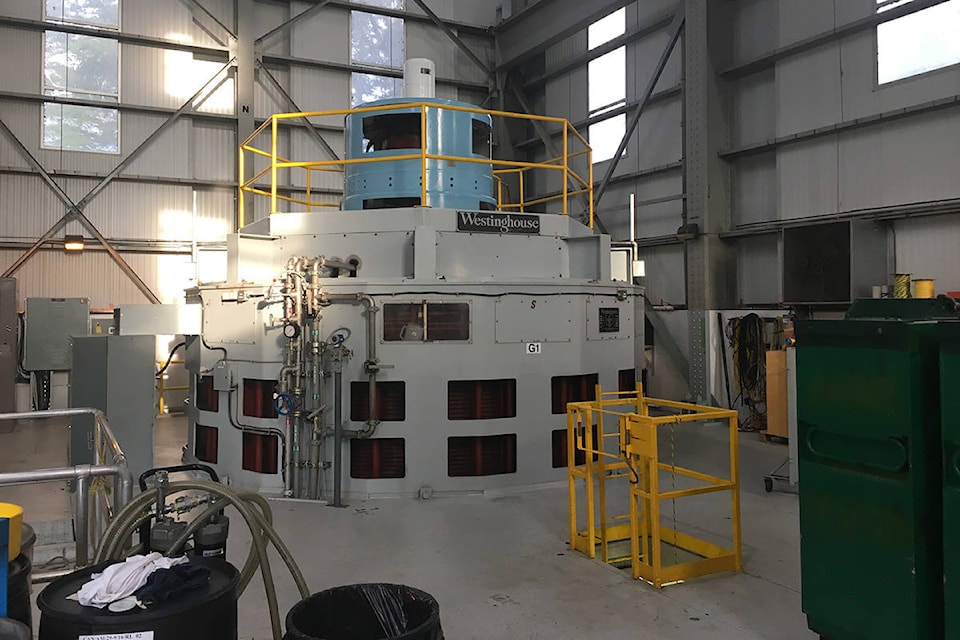Stephen Watson
Special to The Record
So why the maintenance and why this time of year? These questions are asked of the CVRD and BC Hydro when we go through this process three times per year in January-February, March-April and September when BC Hydro’s maintenance work takes place.
As to why, the best analogy is maintenance to your car, such as oil changes to changing the brake pads, to more extensive work when major parts are replaced. This is to keep the vehicle safe, reliable and extend its operating life. The same applies to hydroelectric generating station facilities. This is the only generating station in the Comox Valley and it needs to continue to provide clean, reliable power. For decades we have always timed the main work in September.
As to why September, I will list three reasons. First, BC Hydro needs our generating facilities fully operational during what we call the high-load electricity demand period from November through February. That’s when our customers have their lights on longer and many people on Vancouver Island heat their homes with electricity – heat pumps to space board heaters.
Second, our six generating stations on the four hydroelectric systems on Vancouver Island need to be coordinated so our crews can go from one facility to another during the summer maintenance period.
Third, September is typically when water inflows into Comox Lake Reservoir are low and therefore less impact to power generation output. We also have other considerations such as fish. Depending on the amount of maintenance work, it may last two to six weeks, with the penstock dewatering perhaps up to three weeks. This year the penstock dewatering will be September 3-27. Hypothetically, if we did the generating station maintenance in the fall, the Puntledge River and the CVRD would be more susceptible to turbidly from storm events and possible CVRD boil water advisory notices.
We also provide two penstock dewaterings within the first six months of the year, and that’s related to fish screen cleanings within our penstock to improve efficiency during the salmon out-migration. Mainly, to better enable those fish that may enter the penstock to be pushed out of the penstock and back into the river. These penstock dewatering’s typically last a few days, though if other maintenance issues come up, it may be longer.
The CVRD’s water is drawn off the BC Hydro penstock that runs from the diversion dam to the generating station. When we need to dewatered it three times per year, we provided advance notice to the CVRD to get ready to switch to their back-up pump system and extract water directly from the river into its distribution system.
As the CVRD back-up system is unable to handle peak water demands, the CVRD must move to Stage 3 water restrictions in September.
The good news is the new Comox Valley water system will draw water directly from Comox Lake Reservoir. Since the system will no longer be dependent on the penstock, it will not be impacted by BC Hydro maintenance – great news for all of us. Of course water restrictions will still be needed when conditions in the watershed are dry. In late June 2015, for example, when there was no snowpack, a CVRD Stage 3 was implemented and it lasted most of the summer.
What people may not be aware of is our current Puntledge Penstock Recoating Project, where we are providing a new protective coating on the outside and inside of the steel penstock to prevent corrosion. We are currently doing the exterior of the penstock. Out of consideration for the community and to avoid CVRD Stage 3 water restrictions, BC Hydro has delayed the interior work on the penstock for a number of years, until the new CVRD water system is in place in 2021.
BC Hydro’s Puntledge River hydroelectric system provides a good resource and benefit to the Comox Valley – whether its power generation to keep the lights on, flood risk management, conservation flows for fish habitat during dry conditions, and other water use interests.
Stephen Watson is the stakeholder engagement advisor for BC Hydro
